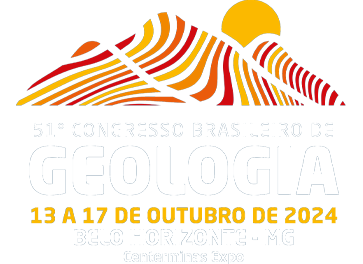Dados da Submissão
Título
3.66 TO 2.77 GA CRUSTAL EVOLUTION IN THE NORTHERN SÃO FRANCISCO CRATON, NE BRAZIL: INSIGHTS FROM U-PB GEOCHRONOLOGY, ND, SR AND HF ISOTOPES
Texto do resumo
The Archean crustal evolution of the northern part of the São Francisco Craton (SFC) reveals a significant similarity with Kaapvaal, Zimbabwe and Pilbara cratons, in southern Africa and in Australia, respectively, especially in the Mesoarchean, before 3.0 Ga. Likewise, compiled geochronological and Nd-Sr-Hf isotopes data suggest that the Archean blocks of the northern portion of São Francisco Craton (e.g. Gavião, Uauá and Serrinha Blocks) shared a similar crustal evolution since at least 3.15 Ga. The 3.42–3.35 Ga TTGs of the southern and western Gavião Block (GB) have negative and slightly positive ɛNd(t) and ɛHf(t) values, with TDM(Hf) ages between 3.50 and 3.90 Ga, indicating that they were produced by partial melting of Eoarchean to Palaeoarchean crust, with minor mantle sources. The ca. 3.30 Ga high-silica plutonic-volcanic system, represented by the Contendas and Mundo Novo rhyolites, which is related to intraplate magmatism and intracrustal differentiation processes, would represent the processes of continental rifting and breakup. In the northern Gavião Block, the 3.64 Ga migmatite-gneiss residues, with negative ɛHf(t), 176Hf/177Hf ratio between 0.2802 and 0.2805 and TDM(Hf) ages between 3.75 and 4.15 Ga of the Mairi Complex represent the oldest dated rocks within the whole São Francisco Craton and also in South America, suggesting the occurrence of late Hadean and Eoarchean sources related to crustal reworking. On the other hand, the 3.15 and 3.00 Ga rocks of the Serrinha Block (SB) have positive ɛNd(t) values, suggesting a predominant juvenile source, which make this block different than the other ones. The coeval 3.15 and 3.00 Ga Uauá Block (UB) rock assemblage has slightly positive to negative ɛNd(t) values, which indicate mixing of crustal and juvenile sources, which is similar to what occur in the Gavião Block. Recent works on the orthogneisses from the Uauá Block are showing LA-ICP-MS U-Pb (zircon) ages between 3.38 and 3.20 Ga, which makes this block ca. 200 Ma older than previously reported in the literature. This age suggests that the UB and the GB are the oldest crustal units from the northern São Francisco Craton. The 2.90 to 2.77 Ga period in the São Francisco Craton is characterized by pervasive crustal anatexis with high-K granite generation, which is similar to Kaapvaal and Pilbara cratons. Therefore, the compiled data about the studied Archean migmatite-gneiss terrains recorded four crustal differentiation intervals (e.g., 3.66–3.51, 3.45–3.30, 3.15–3.00 and 2.90–2.77 Ga) in the northern São Francisco Craton. The similarities observed with the other Archean cratons suggest that the same processes occurred in different parts of the Earth's Archean crust. This early Earth crustal evolution is a topic of debate within the geological community and more detailed research is needed regarding geochronological and isotopic data which can make possible to further the understanding of how Eo-to-Paleoarchean crust evolved in South America.
Palavras Chave
Paleo-to-Mesoarchean; U-Pb geochronology; Nd-Sr-Hf isotopes; Northern São Francisco Craton; Crustal evolution
Área
TEMA 18 - Geocronologia e Geoquímica Isotópica
Autores/Proponentes
Rafael Gordilho Barbosa, Alanielson Câmara Dantas Ferreira, Felipe Padilha Leitzke, Rommulo Vieira Conceição, Johildo Salomão Figueiredo Barbosa, Hervé Martin
